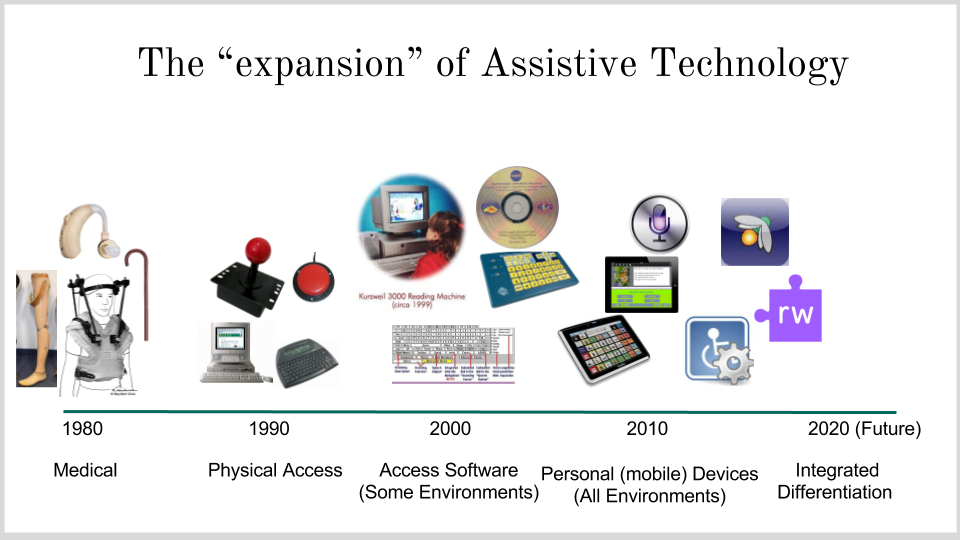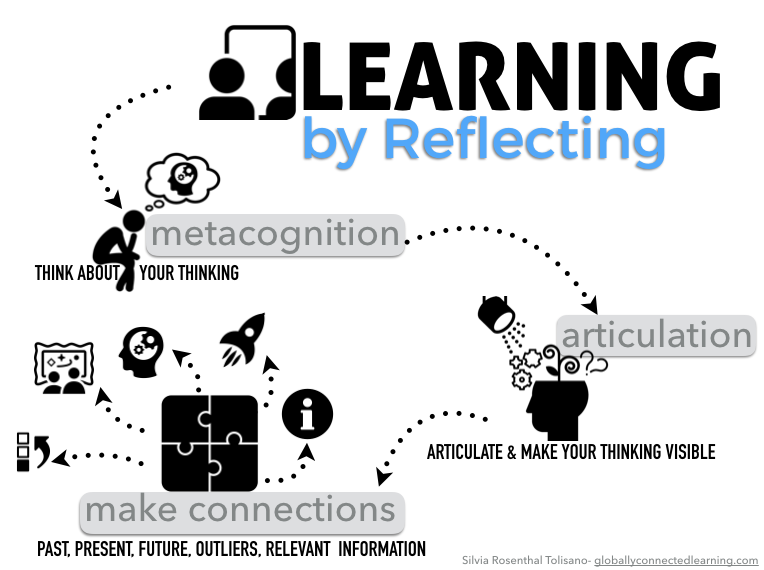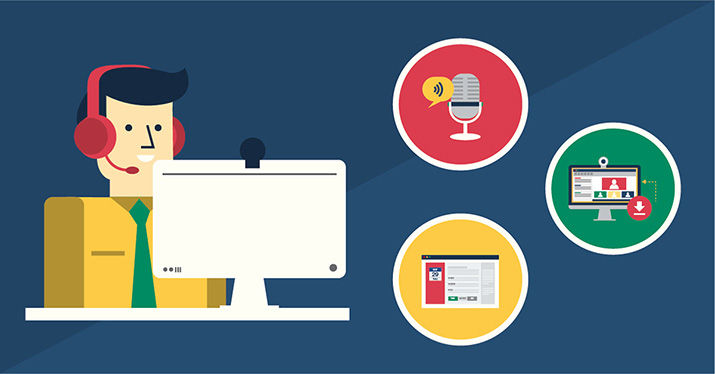Two impressive information technologies II
- lwang698
- Oct 21, 2018
- 2 min read
The other information technology I want to mention is Assistive Technology. From the materials our professor provided, Assistive technology (AT) is a term used to describe "strategies and supports that are used to help individuals with disabilities in health, rehabilitation, and education fields" (Hopkins, 2004).
However, from the definition I have learned in special education, Assistive Technology refers to the devices and services to assist the people with disabilities.

The image above indicates the development of Assistive Technology. In the 1980's assistive technology was directly associated with the medical field, and almost exclusively included wearable braces or walking aids for physical impairment and mobility. By 1990's, assistive technology 'grew' to include computer access. Students with physical, visual, or auditory impairments needed ways to access computers for educational and vocational tasks. This brought several devices into the AT mainstream such as joysticks, switches, word processors, and voice recognition. Circa 2000, computers became common place in most classrooms, and AT expanded once more to include software options. This gave us better contrast for vision impaired, text to speech, speech to text, prediction, and some early communication programs; however, there were not abundant opportunities for students with disabilities to regularly uses large and/or stationary devices.
Around 2010, AT grew exponentially with the affordability and versatility of ipads/tablets. Students no longer relied on going to separate environments to use software they required because of the portability of the iPad as a personal device. Communication AAC apps. alone have made huge advances in providing voices to students with autism! Also, the touch screen and robust touch/voice accessibility features made most websites/text very accessible to student needs.
Presently moving forward, we are currently seeing a surge of web app's which are programs like on your windows computer, but they run on the internet browser. Having a default tool to launch any program (like google chrome) allows for a lot of customization. All students could be on a computer/tablet doing the same assignment, but have access to the specific AT tools if required or even preferred (universal design for learning). Like DRC online testing, several features can be used in preference like enlarged print, text to speech, highlighting, and contrast modes.
I am amazed at the changes of AT with the development of modern technology. However, the development of AT in China is still not optimistic. Most disabled people who need them are currently unable to access them. Lack of access to assistive devices is due to a number of factors including high costs, limited availability, and lack of governance and inadequate financing in many settings. I hope one day I can facilitate the development of AT in China, especially with the disabled children. I can help with people with disabilities in medical field as well as technical field.
References:
http://atanswers.com/LATImoodle/mod/page/view.php?id=2057





Thank you for sharing this information! AT is what I am doing for my blog, and I love the picture shared about. You touch on the key points off AT. Look forward to hearing more from your blog.
The technologies encompassed in the AT category have been impressive to me as well. The organization timeline of advances in AT through the years puts into perspective how new and recent some of the AT used today is! I look forward to seeing what else is invented as AT progresses.